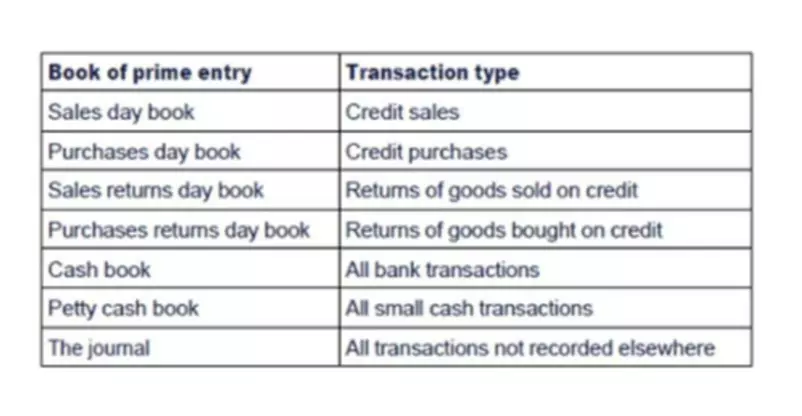The difference between accruals and deferrals
Content

There are accruals for expenses and for revenues. There are deferrals for expenses and for revenues. The accounting system has the built-in capability to handle these items with little human intervention, creating appropriate journal entries, and posting thousands of transactions with little effort. Accrual of an expense refers to the reporting of that expense and the related liability in the period in which they occur. For example, water expense that is due in December, but the payment of that expense will be not be made until January. Similarly, accrual of revenue refers to the reporting of that receipt and the related receivable in the period in which they are earned, and that period is prior to the cash receipt of that revenue. For example, interest earned on the investment of bonds in December, but the cash will not come until March of next year.

When the firm sells or disposes of the asset, it will likely record a loss on the sale or disposal. Such a loss is the “catch-up” for the under-depreciation that resulted from the manager’s intentional bias. The threshold of $10k applies to most expenses and income, but some limited exceptions are listed in the fiscal closing instructions. Generally, items less than $10K should not be accrued or deferred unless there are special circumstances. If you are not sure if you need to create an accrual or deferral transaction, please discuss the potential transaction with your unit’s financial management. If questions still exist contact General Accounting.
Example of a Revenue Deferral
Even though accrual accounting leads to financial reports that provide better summary information than would a cash-flow based report, accruals can be too much of a good thing. That is, rather than accruals providing enhanced earnings figures, they do the opposite. Used when goods or services are received this fiscal year and will be paid for next fiscal year. This is required for items of $10,000 or more, optional for items $1,000 or more, and should not be done for items under $1,000. For contract and grant accounts, accruals should only be done during the June Final fiscal period.
- This method of accounting also tends to smooth out earnings over time.
- In this case, the taxes due are $780.
- JJ’s Lawn Care uses the straight-line method of depreciation and records depreciation expense monthly.
- By measuring and responding to the outcomes that capture the value of the library, innovation accounting allows for more flexibility in prioritizing ongoing operations as the library strives to achieve its goals.
- The basic difference between accrued and deferral basis of accounting involves when revenue or expenses are recognized.
Grouch receives a $3,000 advance payment from a customer for services that have not yet been performed. Its accountant records a deferral to push recognition of this amount into a future period, when it will have provided the corresponding services. Which one of the following affects cash during a period? Recording depreciation expense.
Example of an Expense Deferral
However, the insurance company will report this as part of its revenues in January through June. DateAccountDebitCreditApr-10Accounts Payable$750Cash$750To record payment on account.Note, in both examples above, the revenue or expense is recorded only once, and in the correct month. The second journal entry reflects the receipt or payment of cash to clear the account receivable or payable.
What is the difference between accrued and deferred expense?
The main difference between an accrual and a deferral is that an accrual is used to bring forward an accounting transaction into the current period for recognition, while a deferral is used to delay such recognition until a later period.
The magazine is called “Film Reel” and it is a national entertainment magazine. It focuses on content related to movies that are about to be released accruals and deferrals into cinemas. Amanda Bellucco-Chatham is an editor, writer, and fact-checker with years of experience researching personal finance topics.
How to record accrued expenses
The effect of this is to match the appropriate expense with the month it relates to. GAAP also requires certain additional information, referred to as Notes to the Financial Statement. This is a combination https://www.bookstime.com/ of narrative and numerical information that must be prepared by a real live human. Computers can do many things, but the process of preparing financial statements requires professional judgment.
In innovation accounting, such contributions and value are made explicit and are used to drive the library’s decisions as it develops into a learning organization. Accrual accounting must be used for fixed-income securities and all other assets that accrue interest income. Used when income is received this fiscal year for services or goods to be provided next fiscal year. The reversal of the AVAE will result in a debit to expense, appropriately moving recognition of the expense to the correct fiscal year. Catering services for an event in July of next fiscal year required advance payment this June. Used when goods or services are provided to a customer in the current fiscal year but are not billed for until the following fiscal year.
Innovation Accounting and Francis Taylor
An example is a payment made in December for property insurance covering the next six months of January through June. The amount that is not yet expired should be reported as a current asset such as Prepaid Insurance or Prepaid Expenses. The amount that expires in an accounting period should be reported as Insurance Expense. Example Of Deferred RevenueDeferred revenue or unearned revenue is the number of advance payments that the company has received for the goods or services still pending for the delivery or provision. Its examples include an annual plan for the mobile connection, prepaid insurance policies.
Following the receipt of the payment, the revenue that had been previously accumulated is subtracted from the revenue that was actually received. For example, if a service is provided to a customer, but the money for that service has not yet been collected, the income will be moved to an account that is designated for revenue that has been accumulated.
Another source of bias is actually built into accounting by accountants themselves. Thus, the conservative nature of accounting rules serves as an additional source of bias. If we generally believe that managers have incentives to bias accounting numbers upwards, then the conservative nature of accounting rules provides some offset. As a heuristic for communicating this idea in class, the following representative formula is used. Uses DDM for asset allocation and for calculating the Standard & Poor’s 500 monthly excess returns for the 1968–1982 period. Must include the date the goods/services were received, vendor name, purchase order number or invoice number. Include the date of the intended activity in the Explanation field.
What Is a Deferral in Accounting?
Deferrals are a type of ‘adjusting’ entry in a company’s general ledger that delays the recognition of a transaction in the company’s accounting records until a future fiscal period or periods. Deferrals are used to put off revenue — meaning, the amount to be collected, and expenses, or the amount to be paid. Revenue and expense deferral both stem from the same two accounting principles: revenue recognition and the matching principle. The revenue recognition principle, which is fundamental to accrual-based accounting, dictates that revenue should be recognized in the period in which it is earned — defined by the Financial Accounting Standards Board (FASB) as ‘when the selling company satisfies a performance obligation by transferring a promised good or service to a customer, giving the customer control of that good or service’. The matching principle is the reason for expense deferrals. It calls for expenses to be reflected in a company’s books during the same accounting period… Ещё
DateAccountDebitCreditApr-15Cash$200Accounts Receivable$200To record receipt of payments on account.This is a generalized example of a journal entry. Many companies use an accounts receivable subsidiary ledger to keep track of each individual customer. The company should record both revenue and accounts receivable for $200 each. The work was done by the end of the month. Repair technicians were paid for their time and labor. Parts used in the repairs were also paid for. The company should record both the revenue and related expenses.

Leave a comment